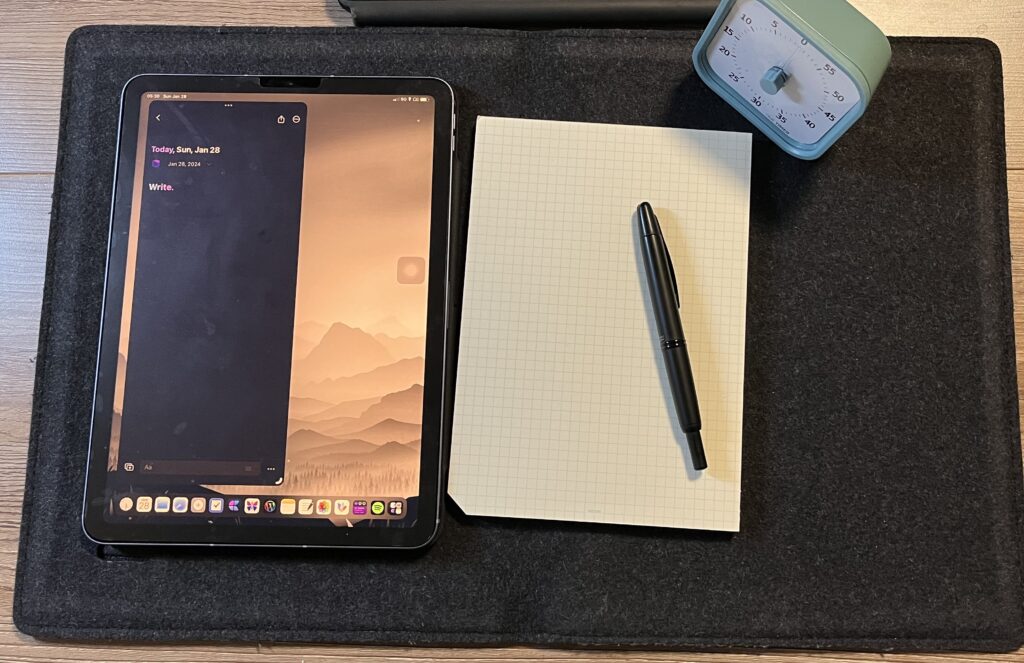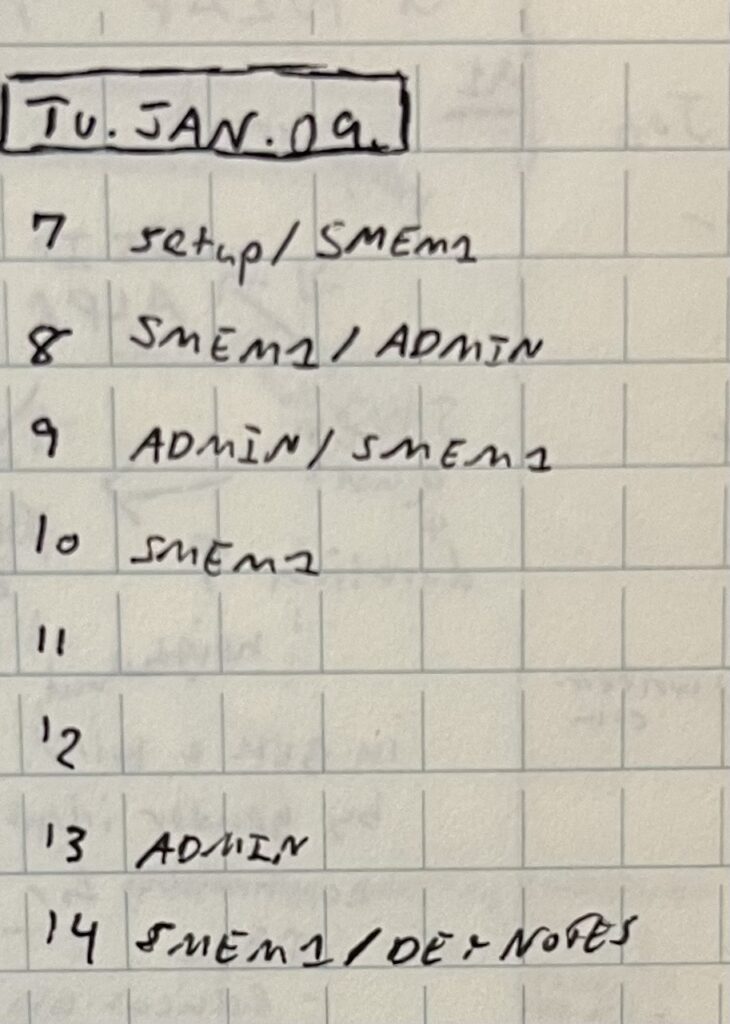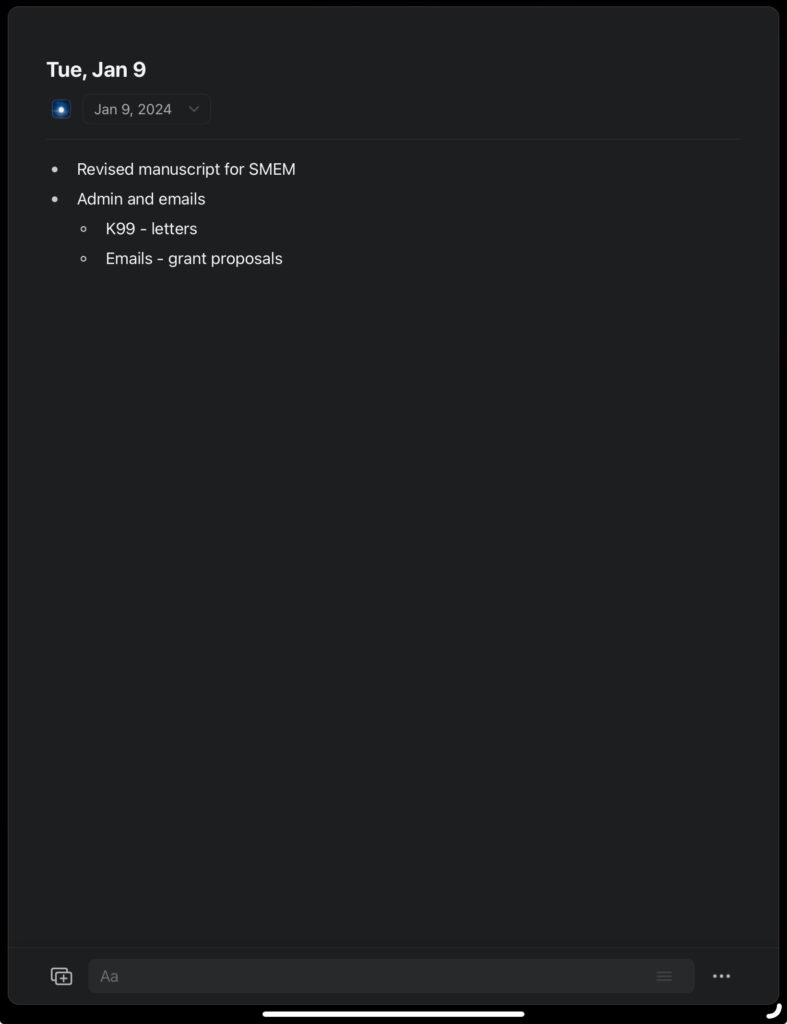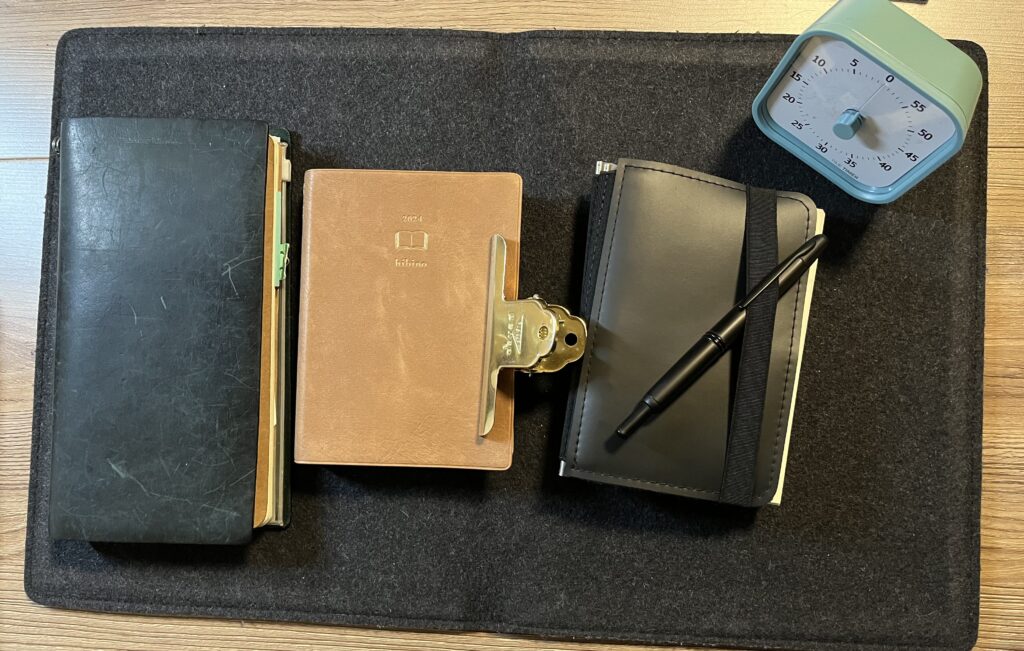Necessary Components and Workflow.

The information that we collect, organize, and review represents our journey across time. Our notes form our written history. Note-taking strategies help us learn and retain new information, remember previous information from the past, and grow in our personal and professional lives. Note-taking has helped me in each of these areas.
But, it’s incredibly easy to get lost in the act of note-taking for note-taking’s sake. When that happens, we lose track of why we’re taking notes and get distracted by new apps, new features, anything new. I’ve been there. I’ve lived there. And I honestly still deal with it. To keep myself in check and avoid switching to the next cool app, device, or method, I am keeping a core note-taking system. Below, I’ll go over the core components I use for note-taking, and I’ll explain why I think it works for me.
Core Components of My Note-Taking System
My note-taking system involves both analog and digital tools. The core physical components are paper and my tablet or laptop.
The non-physical components are the more nuanced parts of my system. These include capturing, processing, reviewing, producing, and reflecting on information. Each of these steps has a place in my personal and professional life, from writing blogs and freelance articles to academic manuscripts. I’ll go over each step below.
- Capture. When I have a thought that I want to revisit, I make a note of it. Sometimes this is on sticky note in my pocket during a running workout. Other times, it’s a digital note on my phone. It doesn’t matter where I initially capture the idea, as long as I make time to process and review the note.
- Process. After notes have been (often messily) captured, I need to process them, make them readable, understandable, and sorted. If the note no longer has value, like a grocery list that I don’t need to reference, I toss it. If I do need to see the note again, like meeting notes, I summarize them, write actions, and digitize the important aspects of the note. For example, I transfer outstanding actions to my task manager.
- Review. I try to review notes once each week. I have a recurring task that reminds me to go over my analog and digital notes. I read over recent analog notebooks and integrate important notes into my digital apps (scans, brief summaries, etc). I review any unsorted digital notes, my active projects, and upcoming deadlines.
- Produce. For me, producing new information often involves some form of writing. I use several notes (on projects, articles, annotations, diagrams) to create outlines, which I develop into drafts and eventually, publications. I have written personal blogs, academic research articles, and freelance articles. I enjoy the writing process, and my note-taking system is partially responsible for facilitating spaces that allow me to write.
- Reflect. When we reflect, we encourage ourselves to actively pay attention to what we may have otherwise missed. I reflect to be aware of what I am learning from reading the work of others, my writing, relationships, and myself. Reflecting complements the review process. In addition to sorting information and reengaging with it, I reflect in a more subjective way and try to understand how I feel about the notes I’ve taken.
These note-taking steps do not have to follow this specific order. For example, much of my writing develops from journaling reflections. Similarly, critically reviewing a project may happen before one produces the final product. Reviewing along the way helps us monitor our progress and pivot as needed.
Note-Taking in Practice Throughout a Typical Day
My note-taking typically starts in the early morning. I journal daily to check in with myself. I also mentally prepare myself for the day by thinking about my tasks and how to handle what’s to come.
I use a combination of physical notebooks (time blocking, brief reflections) and digital apps (task management and note-taking apps like Things 3, Craft Docs, Goodnotes, and Apple Notes). These help me to stay focused on what’s important for the present moment.


Analog time blocking and digital log. Photo from author.
When I get to the end of my work day, I disengage. For me, that involves logging what I worked on during the day, reviewing my daily notes, briefly preparing intentions for the day ahead, and writing my disengagement phrase.
If it’s the end of the week, I typically review the week. If I happen to finish a project, I reflect on the experience with that project and archive it in my digital notebook (e.g., Craft Docs).
At the very end of my day, I journal. These days, I’m using two-page planner as a daily diary. I log the events of the day and reflect on anything that particularly impacted me. I make a personal to-do list for the next day. Then, I often just doodle until I feel sleepy enough to get into bed and drift to sleep.

My Life in Notes
I started taking notes to get through school. I loved physical notebooks and colorful pens. I annotated everything (and still do). Partially due to the joy of note-taking, I managed to get through grade school, a PhD program, and multiple personal and professional writing projects. All that considered, the most important benefit I’ve gotten from my note-taking journey is a sense of peaceful clarity, of singular focus.
My note-taking system does a decent job of reducing the pressure to hold onto everything going on in my life and remembering it at just the right moment. We cannot expect ourselves to mentally hold on to time-sensitive information. Memory is flawed. Written notes, reminders, analog indices, digital search, and notifications help me keep track of my calming hobbies, social engagements, and diverse responsibilities.
Note-taking allows me to manage the many areas of my life, those for enjoyment and obligation. What does your note-taking system do for you?
Notes
- Resources: I use templates to keep track of academic projects, meeting notes, and weekly planning and review. In each of the shared documents linked above, I added notes in parentheses to explain how I’m currently using backlinks to connect information in various places.
- Curtis McHale teaches a course on making connections that involves tool-agnostic note-taking systems, an idea that really resonates with me. I also enjoyed reading his article on his experience with Craft Docs, as it helped me stick with Craft Docs instead of switching my note-taking system (that’s worked for me for several years).
- Rob Lambert and Helen Lisowski from the Stationery Freaks podcast discuss hybrid note-taking systems, combining analog and digital methods.
- Trina O’Gorman teaches a journaling technique, Mind Mosaic, that helps us write and practice letting go.
- If you found value in this writing and want to say thanks, here are a few ways to support the blog:
- Leave a comment for further discussion.
- Chat with me directly and send feedback, questions, or article requests to emily.c.hokett@gmail.com.
- Join Medium and my email list for regular posts.
- Find more of my posts on emilyhokett.blog.
- Buy me a tea🍵 to support the maintenance of the blog.